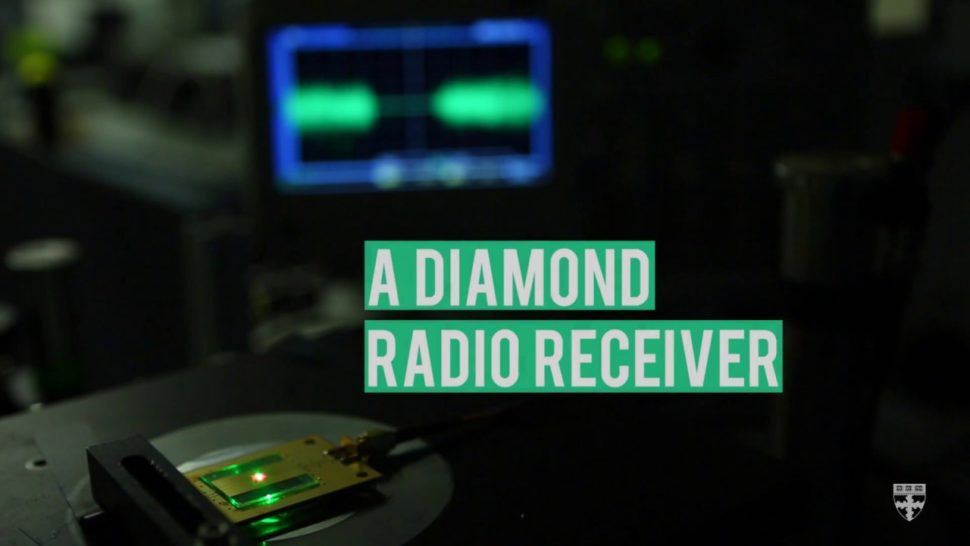Scientists at Harvard have built an atomic radio receiver. If that doesn’t sound like news, you might want to consider that the components of this radio are the size of two atoms. In true holiday spirit, they used this radio to broadcast Christmas music.
Credit is given where credit is due, and professor Marko Loncar and graduate student Linbo Shao of Harvard’s John A. Paulson School of Engineering and Applied Sciences deserve a round of applause for applying basic radio engineering principles to an incredibly small scale machine.
Amazingly, they made a radio the size of two atoms.
Instructions for Building an Atomic Radio
Radios are composed of five essential components, and the pair created those parts out of a diamond crystal made of carbon atoms.
The researchers replaced some carbon atoms with nitrogen atoms to create the first two parts of the radio (the power source and the receiver), leaving a hole next to each one and creating what is called a nitrogen-vacancy center.
The power for the atomic radio was supplied by a green laser pointed at the nitrogen-vacancy center, which excited the electrons in the diamond.
Nitrogen-vacancy centers have enormous potential as building blocks for small machines because they are natural light emitters.
When excited electrons around the nitrogen-vacancy center were hit with a radio wave, they were converted into a red light which served as the receiver of the radio.
The tuner of the radio was provided by an electromagnet positioned near the receiver capable of altering the frequency to which the receiver is atuned.
Finally, a photodiode was used to convert the red light back into an electrical current. This enabled either a speaker or pair of headphones to pick up the current and broadcast it as sound- which, in this case, was Christmas music.
Next Steps for the Atomic Radio
Loncar and Shao aren’t the first to achieve small-scale engineering feats using nitrogen-vacancy centers. For example, other researchers are working on harnessing the natural light emissions from diamond imperfections to make quantum computers.
For example, other researchers are working on harnessing the natural light emissions from diamond imperfections to make quantum computers, or even leveraging their nitrogen-vacancy centers for high-capacity storage capabilities.
With a radio so small, one can operate it at extreme temperatures.
For example, the Harvard team tested their radio at up to 662 degrees Fahrenheit. According to Loncar, “this radio would be able to operate in space, in harsh environments and even the human body, as diamonds are biocompatible.”
As commercial space flight matures, the need for “space radios” might be here before we think.
While implanted radio transceivers might still be a bit farther off, having the technology to make ideas into reality is the first step in making science fiction into science fact.
















Comments (0)
Most Recent